Here Are the Missing Pieces in Your Multifamily Marketing Plan
Content marketing in the multifamily industry has long been an afterthought — nice to have but not essential. But as multifamily marketing trends shift, it’s clear that how we create content can no longer be an experiment or an afterthought. It’s the strategy.
Property management teams relied on static flyers, cookie-cutter ads, and generic website pages for years to engage with prospective renters. Today, that’s simply not enough.
Multifamily inbound marketing is about meeting renters where they are — searching, scrolling, and researching online. That means an effective multifamily content marketing strategy must be data-driven, omnichannel, and hyper-relevant to a specific multifamily buyer persona.
At Criterion.B, we’ve worked with multifamily properties nationwide to refine their marketing campaigns and adjust to modern renters’ expectations. And if there’s one takeaway from the last five years, it’s this:
If your multifamily brand identity isn’t aligned with the multifamily brand experience, you’re leaving leads (and leases) on the table.
What Residents Expect From Your Multifamily Content Marketing
Gone are the days when content was just a blog and a few Google Ads. Modern multifamily marketing goes beyond writing informative blog posts — it’s about crafting an experience that resonates with a target audience. It’s not enough to rank on Google; you need to convert the traffic once people land on your page.
Think about it: When potential residents search for “best apartments near downtown,” they don’t just want a list of properties. They want reviews, neighborhood insights, community engagement, and compelling content that reassures them they’re making the right choice. That’s why search engine optimization (SEO) alone isn’t enough. Multifamily SEO has to work in tandem with high-quality, engaging content that educates, informs, and builds trust.
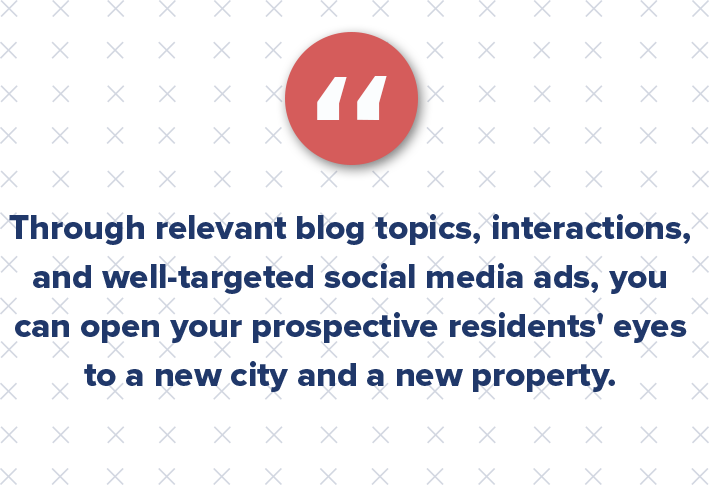
Why Is Content Marketing Still Undervalued?
The biggest misconception in multifamily inbound marketing is that content isn’t a revenue driver. Some property management teams still consider it an expense rather than a core lead generation strategy. But the reality is that content isn’t just about rankings — it’s about influence.
Content builds trust. A strong Google Business Profile with detailed posts, FAQs, and resident reviews boosts credibility. Informative videos and testimonials on a social media platform increase engagement.
A well-optimized SEO strategy ensures your property is found before competitors. And most importantly, content helps renters see themselves in your community — before they even visit.
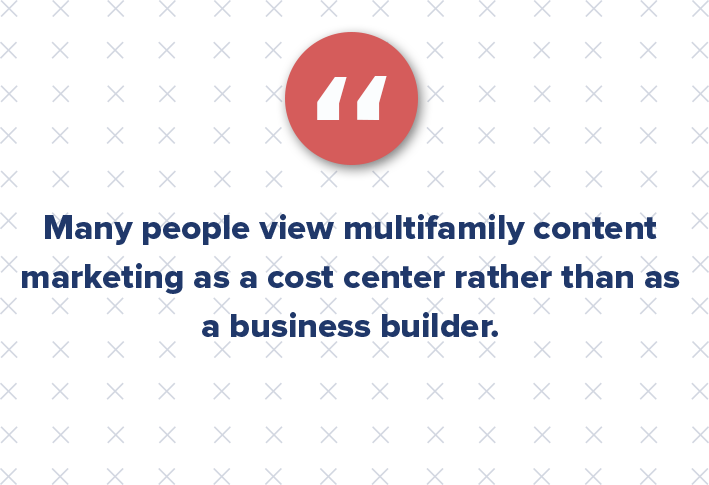
How to Build a Content Marketing Plan That Works
A successful content marketing strategy requires more than a few blog posts. Here’s what multifamily properties need to prioritize:
1. Know Your Audience, Build Your Persona
Your multifamily buyer persona determines everything: messaging, branding, social media marketing, and advertising strategy. Are you targeting young professionals, downsizing baby boomers, or remote workers? Your content must speak to their unique needs and expectations.
2. Leverage Multiple Channels
Your audience isn’t just on your website — they’re across multiple social media platforms, browsing on Google, and checking online reviews. Effective multifamily content marketing should be spread across organic search, email, video, and social media.
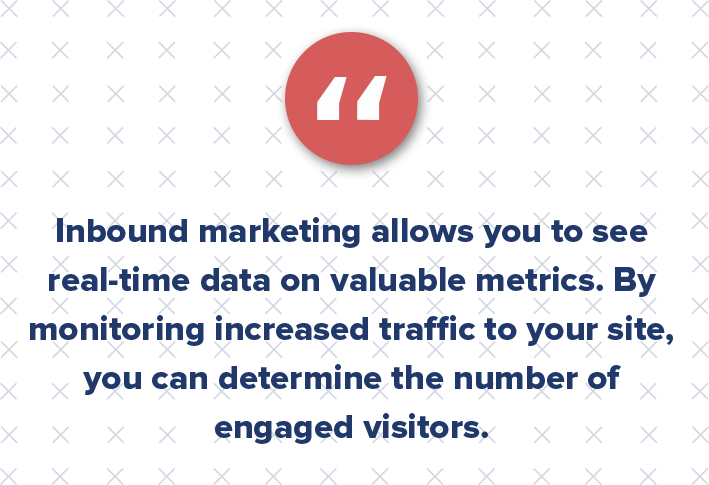
3. SEO + Content = Visibility
Writing great content is useless if no one sees it. Search engine optimization (SEO) is critical for long-term success. Whether optimizing for Google Business Profile, crafting data-driven blogs, or improving site structure, every piece of content should be working to increase organic traffic.
4. Prioritize Value, Not Just Promotions
Your marketing plan shouldn’t just push lease specials — it should position your property as a go-to resource. Think about content like:
- Apartment living tips
- Community guides
- Moving checklists
- Resident success stories
- Neighborhood spotlights
5. Social Media Is More Than Just Posting
Social media marketing for multifamily isn’t just about posting floorplans. It’s about storytelling. A smart multifamily branding agency will craft campaigns highlighting the multifamily brand experience, showcase resident testimonials, and engage with followers through interactive content.
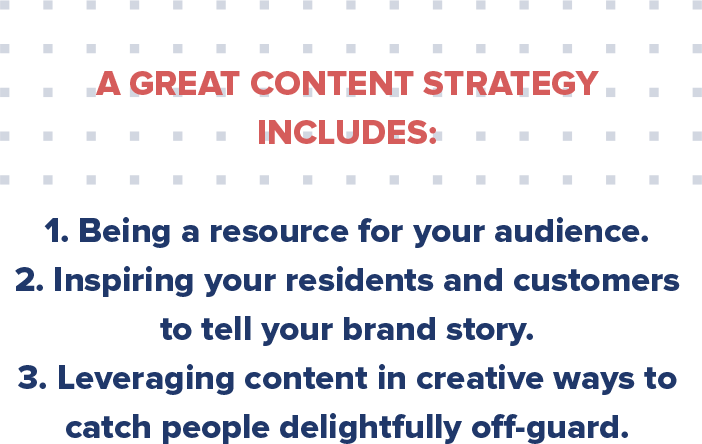
Essentially, you must create great content and then adapt it across platforms. For example, a single blog post can be shared on Twitter with a snappy headline, extended to Instagram with an engaging image, and adapted to a shareable infographic.
While social networks continue to grow more visual, multifamily marketing professionals will have the opportunity to be wildly creative in their cross-platform applications.
How Do You Justify the ROI of Multifamily Marketing?
If you’re approaching your content marketing strategy correctly, you can tie your efforts directly to ROI — both qualitative (brand-focused) and quantitative (business-focused).
Let’s take Zillow, for example. Its content strategy achieves highly targeted brand goals (i.e., establishing Zillow as a storyteller within real estate) and business goals (i.e., driving traffic to its website to increase conversions). It should work the same way for your multifamily property:
- What multifamily brand goals are you trying to achieve?
- What business goals are you trying to achieve?
No matter what your business is, your content marketing actions should be driven by the questions above. Only then can you develop a roadmap with a purpose and measurable objectives.
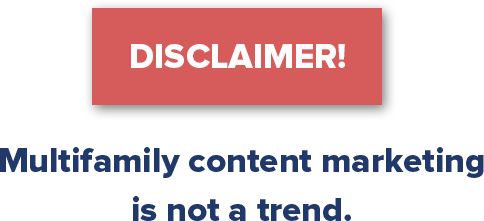
Are You Ready for the Future of Multifamily Marketing?
We’re at an inflection point. Inbound multifamily marketing is evolving, and renters expect more. They don’t just want listings; they want an experience. The brands that succeed will be the ones that invest in content — not as an afterthought, but as the foundation of their lead generation strategy.
If your multifamily marketing still feels stuck in the past, it’s time to rethink how you connect with potential residents. Content isn’t just king anymore — it’s the entire kingdom.





